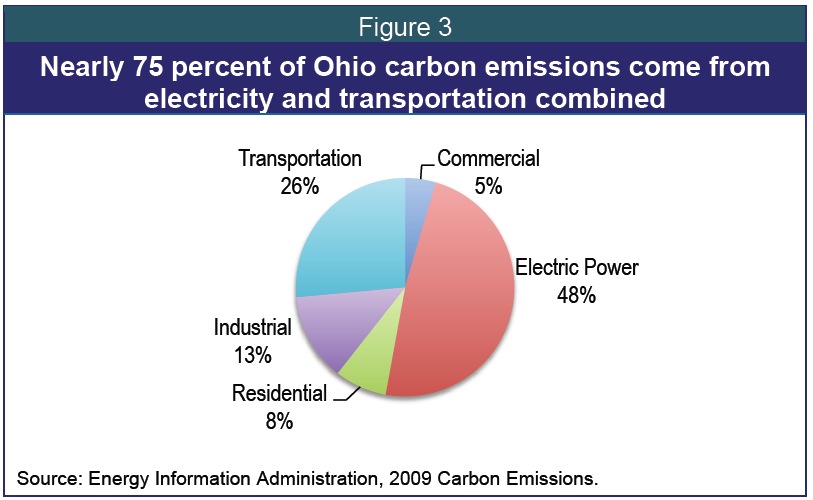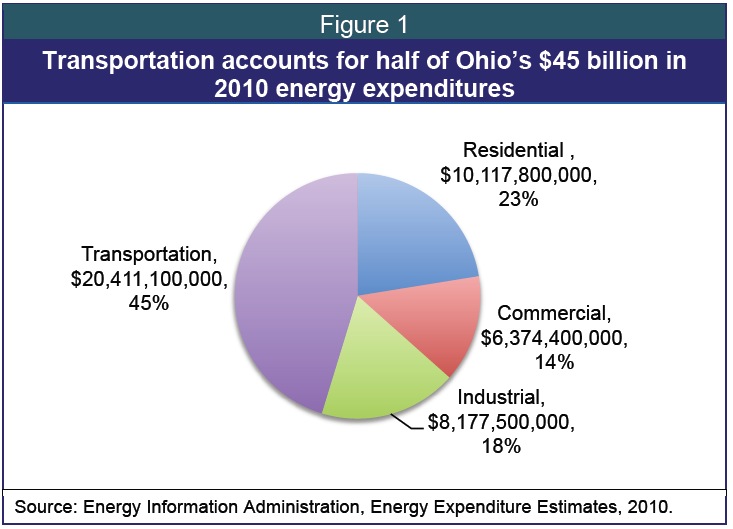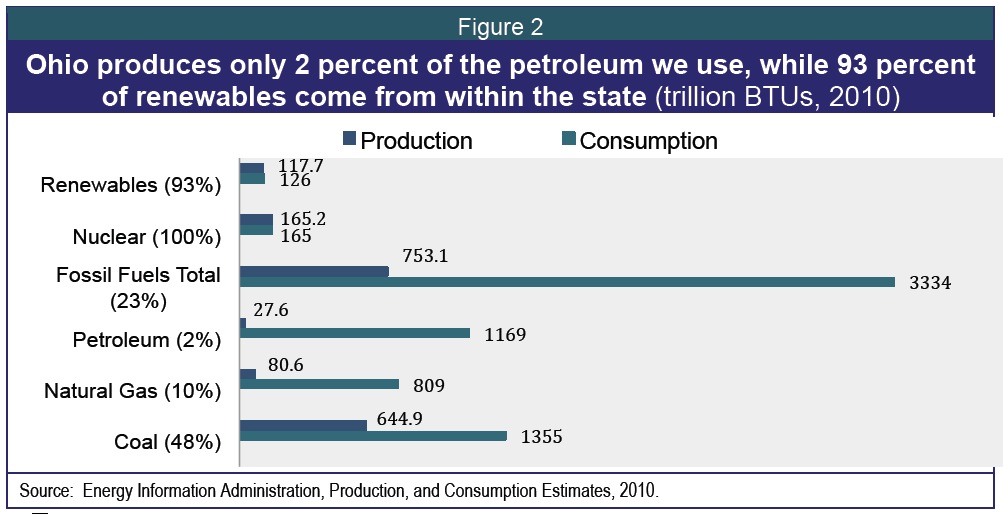POLICY MATTERS OHIO
Executive Summary
Ohioans spend a large amount of money on energy. In 2010, we spent $45 billion, nearly 10 percent of our state’s gross domestic product. Nearly half of those energy dollars (or more than $20 billion) was spent to fuel cars, trucks, and buses, and nearly all of which left the state or country in order to import oil. Ohio can reduce its dependence on imported oil by promoting electric vehicles (EVs) and buses, as well as passenger and freight rail.
Key Findings
- Ohioans spend 10 percent of state gross domestic product on energy, half on transportation; 98 percent of the oil we use is imported.
- States have adopted policies to drive demand for electric vehicles and reduce petroleum dependency.
- Ohio is well positioned to be a key player in the EV supply chain, but other states are working harder to develop this new industry.
- Several Ohio communities, including Oberlin, Cincinnati, Cleveland, and Cuyahoga Falls are using municipal aggregation and municipal utility power to increase use of local clean energy, thus keeping energy dollars local.
Positive policy changes, market trends are driving demand for electric vehicles
Federal Corporate Average Fuel Economy (CAFE) standards will drive production and adoption of EVs. California adopted similar technology-driven standards, which will lure manufacturers of EV technology to the state.
If consumers demand EV technology, somebody will need to manufacture it. Ohio is well positioned to be a key player in the EV supply chain if the state promotes early adoption of this technology. Other states, however, are working harder to develop this new industry. In 2012, Californians bought one-third of all electric vehicles, in large part because of strong local incentives. Ohio currently has none.
Federal and state incentives, as well as state fleet requirements help drive demand. Of course, incentives should only be implemented with strong standards and accountability. The federal income tax credit for plug-in electric vehicles (PEVs) ranges from $2,500 to $7,500. A number of other states offer additional incentives. Pennsylvania, for instance, offers residents $3,500 in rebates for EVs. The majority of states favor alternative fuel vehicles over conventional fuel vehicles in their procurement process. In the past, the Ohio Department of Transportation has supported green transit vehicle adoption with the use of flexible federal funds allocated to the state.
Investments in electric vehicle infrastructure reduce barriers by ensuring greater availability and convenience of charging stations. Electric-car maker Tesla plans to build a nationwide network of solar “supercharger” stations. Ford has been working on a joint project with the solar manufacturer SunPower to provide solar panels to EV owners for home charging. The Drive Electric Ohio initiative has been working to map existing infrastructure and identify key locations for future infrastructure development.
Download full report (PDF): Green Electricity and Transportation (GET) Smart
About Policy Matters Ohio
www.policymattersohio.org
“Policy Matters Ohio is a non-profit, nonpartisan policy research organization founded in January 2000 to broaden the debate about economic policy in Ohio. Our mission is to create a more prosperous, equitable, sustainable and inclusive Ohio, through research, media work and policy advocacy. Ohio faces enormous challenges from the global recession, three decades of deindustrialization, rising inequality, and global warming. We also see tremendous opportunity to reinvest in Ohio’s workers, children, cities and infrastructure, to forge an economy that works better for all. “
Tags: Electric Vehicles, EV, OH, Ohio, Policy Matters Ohio








 RSS Feed
RSS Feed